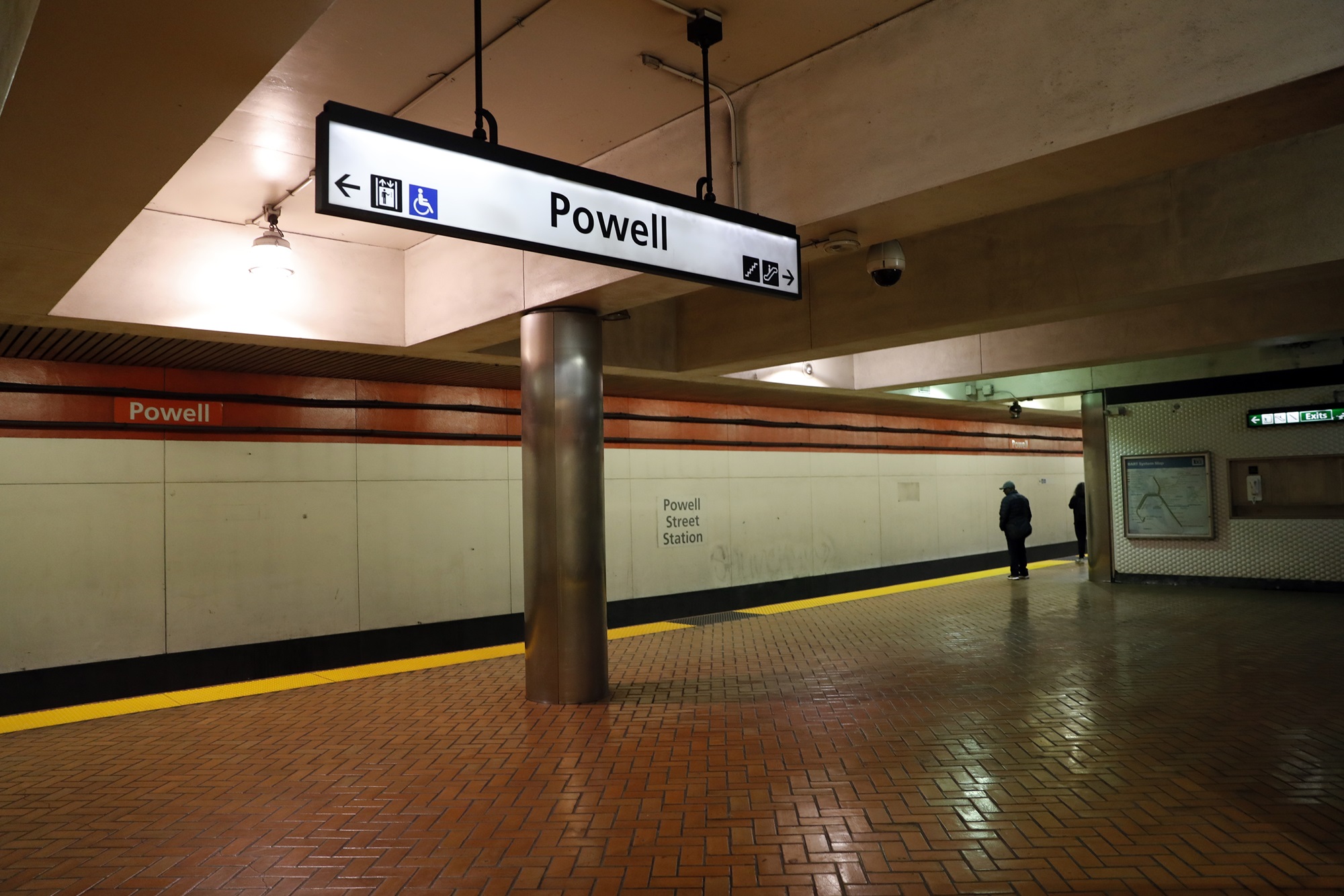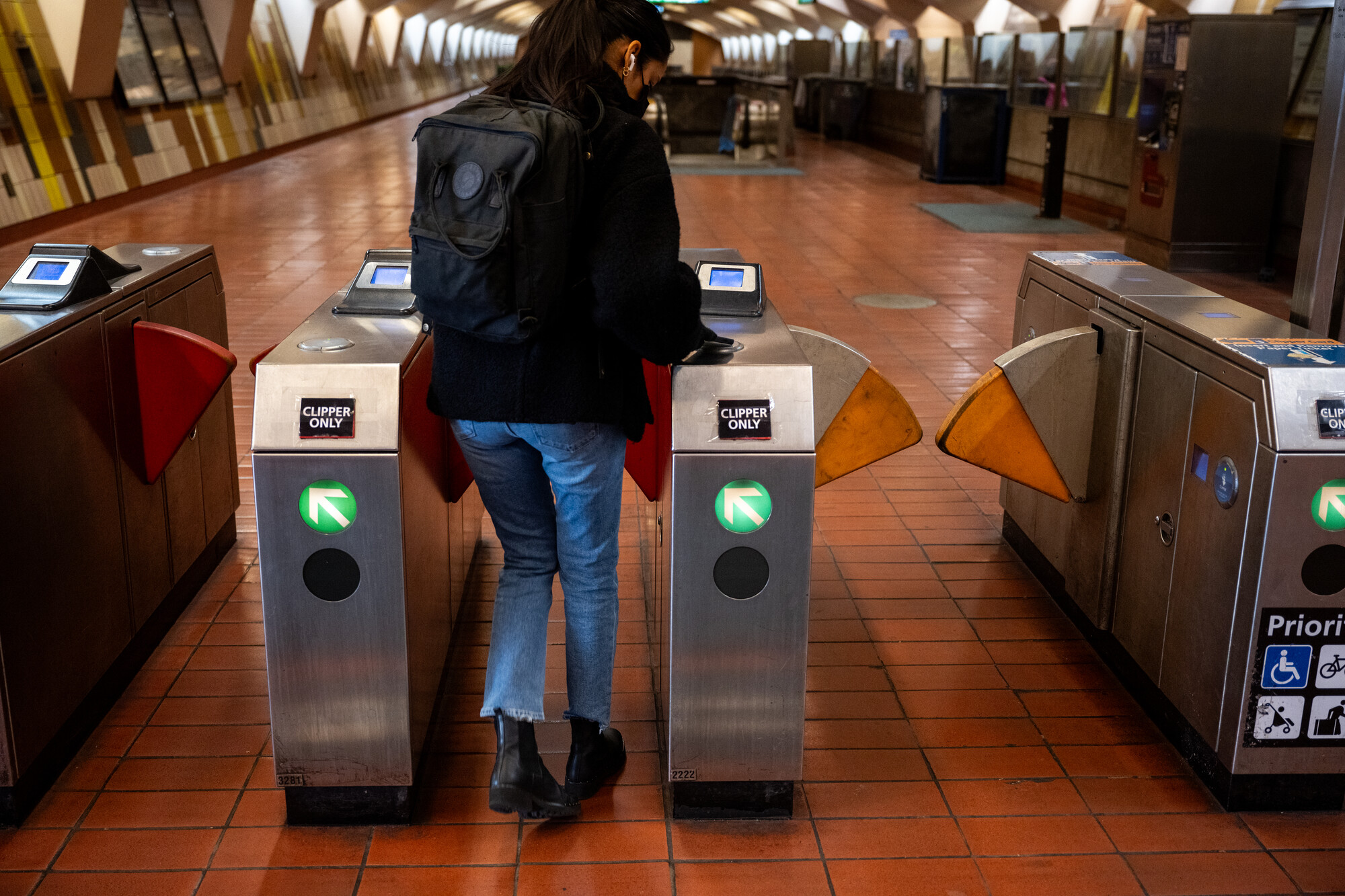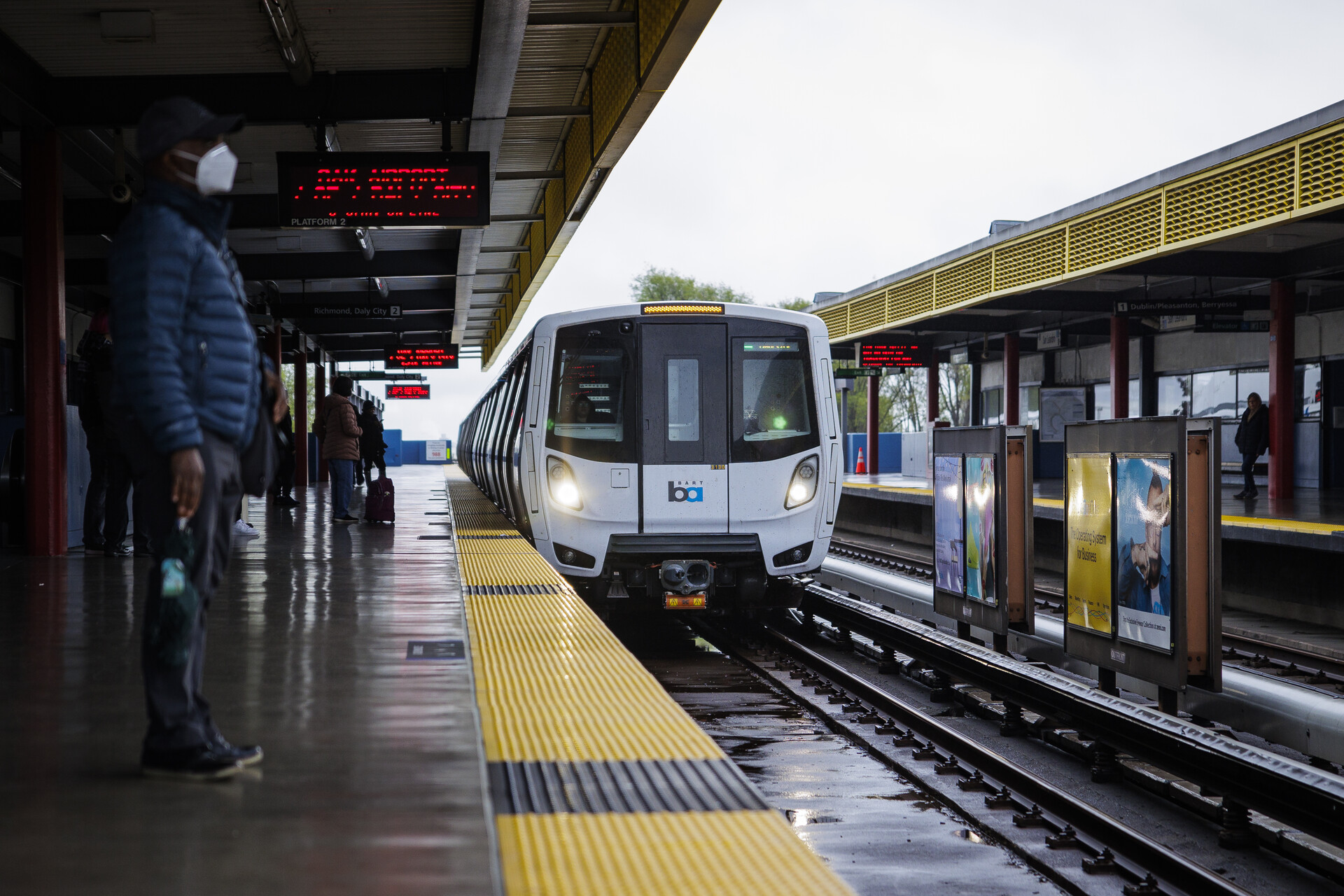At the 16th Street–Mission station, a worker announcing the shutdown to riders said the computer failure had even disrupted communications from the agency and left employees unable to clock in.
Across the Mission District, Ian Rice arrived at the 24th Street station shortly after 7 a.m. to take BART to his office downtown.
“This is the first I’m hearing about this,” he told a KQED reporter after finding the fare gates at the station’s underground entrance closed. Above ground, no signage warned that the trains below were halted. “I was planning on going upstairs and seeing if I could maybe take the 22 [Fillmore], take the bus. We’ll see what’s available, but this is going to be an issue.”
He was among the throng of commuters shuffling in — and quickly out — of the station during the busy morning commute.
Luna Pantera arrived at the same station around 7:15 to catch a train to the car she was supposed to pick up before work. She said the closure meant a 20-minute delay and a more expensive commute.

“I’m going to have to take an Uber that I really can’t afford, so I’m not very happy right now,” she said.
Pantera told KQED that this isn’t the first time BART has frustrated her.
“It’s either the escalators are out or the trains are filthy, and we’re still raising prices,” she said. “It would have been nice to get a systemwide alert. I didn’t get one, and I do have BART on my [phone], so I could have made other arrangements.
“This is just not convenient, and I think BART needs to do a lot better.”
The agency has raised fares twice in the last two years, increasing the price of an average ride by 11% since 2023, as it faces a “fiscal cliff.”

Like other Bay Area transit systems, BART has struggled to bounce back after the COVID-19 pandemic as more commuters shifted to remote work. The agency recently announced $35 million in budget cuts and cost controls to balance its books for 2025, but its deficit is expected to balloon to $400 million by 2027.
“The Bay Area has the highest work-from-home rates in the nation and the slowest downtown recoveries,” the agency said in a statement on its website. “This has created an ongoing structural financial deficit, severely impacting BART’s long-term ability to deliver the high-quality transit service the Bay Area relies on.”
It’s warned that without changes in its funding, there could be dire consequences, like cutting lines, closing stations earlier at night, and even ending weekend service.
In March, state Sens. Scott Wiener, D-San Francisco, and Jesse Arreguín, D-Berkeley, introduced a bill that would put a sales tax measure on the 2026 ballot in some Bay Area counties meant to fund day-to-day transit operations.
The Metropolitan Transportation Commission has estimated that the tax could raise about $440 million to $550 million a year, depending on the tax rate and which counties are included.

Supporters of that measure took Friday’s major disruption as an opportunity to remind Bay Area residents what’s at stake if BART and other transit agencies buckle under the financial strain.
“Without sufficient funding, these kinds of problems are going to get worse,” transportation activist Cyrus Hall said, standing with a crowd holding pro-BART and Muni signs at the Interstate 80 westbound off-ramp on Fremont Street around 10:30 a.m. “BART’s been running on a shoestring for years, and we need to fix that now.”
Hall said that even if lawmakers put the ballot measure to voters in 2026, BART will need funding to patch gaps until then. Arreguín has also asked Gov. Gavin Newsom to allocate $2 billion in state funds to transit systems across the state over the next two years. The governor’s revised budget proposal is expected this month.
Without both a ballot measure and stopgap money, Hall said the system could be at risk.
“We’re looking at service cuts before we even get to the ballot,” Hall told KQED. “And that would really be devastating from a public support perspective.”
Slashing late-night or weekend hours and running fewer trains would mean longer commute times and more road traffic for drivers.
“Traffic was horrible,” one driver yelled out the window of his car, idling in the traffic crawling off the Bay Bridge.
“This is really our last moment where we can really save public transit and not see a decade of decline before we can start to rebuild,” Hall said.
KQED’s Brian Watt, Ethan Toven-Lindsey, Azul Dahlstrom-Eckman and Juan Carlos Lara contributed to this report.





